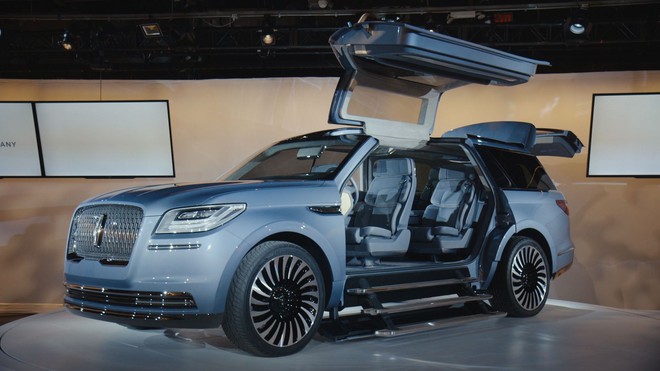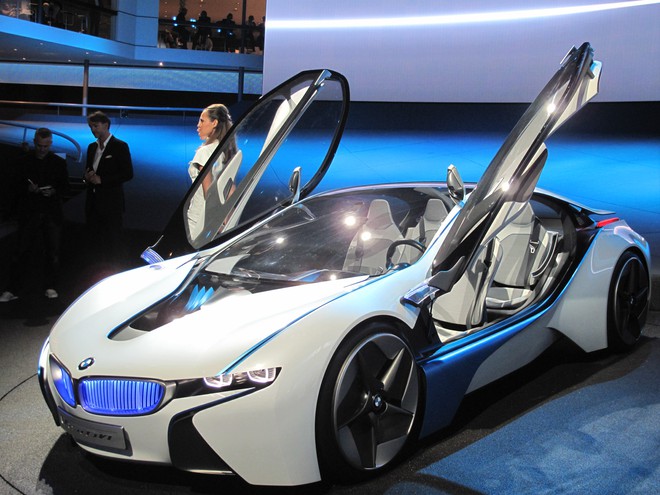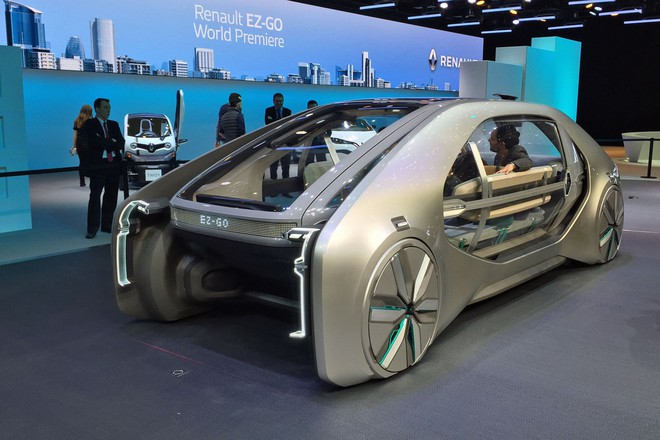Concept cars often gain attention at auto shows, with many different shapes and sizes, costing millions of dollars, but are rarely designed to be sold in the marketplace.
Concept cars often appear in auto shows, and people are often easy to swallow due to their exotic design, over-the-top interiors, and features unheard of on a car never made.
It’s no secret that these “unique” designs can be very expensive to perfect, sometimes millions. But have you ever wondered why so many manufacturers would agree to invest so much in these cars, because it seems we rarely see these concepts go into production? And why are the most interesting elements of concept cars often dismissed in practice?
Ralph Giles, Global Head of Design at Fiat Chrysler Automobiles, expert in automotive design, shares the secrets of these concepts. He has experience in designing many famous cars, such as Chrysler 300 2005, SRT Viper 2014 …
“First and foremost, people don’t realize that concept cars are often on display at auto shows and there for the media to enjoy. But the shows usually run over a few weeks and a lot. . ” long after the media is gone, the public is coming back, ”says Ralph. “Sometimes they might not know a whole lot about the brand, just saying ‘Oh’ when they see it, but they know this concept is a clear indication of where the brand wants to go, with the technology.”

Dodge Viper, one of Chrysler’s most famous concepts.
According to Ralph, this is the main reason concept cars have been created, like the Prowler, Jeep Rescue, Challenger and even the Viper. Because the public will adopt it in a superficial way, like, “You have to build this car”. In many cases, users will mail checks and deposits to manufacturers for a chance to own these models.
“The letters are written with passion. Nothing would have happened without these concepts. So when we saw this, we thought we could have created something. It’s here,” said the car designer.
And the second reason concept cars exist is that they can be used to advertise a vehicle that is actually slated for production.
According to David Woodhouse, design director at Lincoln Motor Company, ahead of the launch of a new version, the company might come up with an opening promotional product with a concept that slightly exaggerates the car. the company manufactures. The concept car will therefore be a little more “idealized” than it actually is and this will create interest and help customers realize that the product will be available after a year or two. .

Lincoln Navigator concept.
The Lincoln Navigator concept, for example, features doors and steps that deploy when the door opens, as if to invite passengers in. These exaggerated features don’t show up in the 2018 production car, which has standard doors, but the concept has caught the attention and excitement of customers waiting for a production version of the car. .
“These special features are difficult to manufacture, but they will always have an impact on the market to come. So you might not see them for the first few years after experiencing them, but yes. Maybe longer, around 10 years later, maybe they had a major influence on automotive design trends, ”says David.
BMW’s 2009 Vision Efficient Dynamics concept car is another testament to this, designed to be a high-performance hybrid that balances speed and fuel economy. And 5 years later it became the BMW i8. The old design was still intact, but some flashy features like the see-through doors and the radiator throttle design did not go into production. But the I8 was a hit from BMW, and now we’re seeing hybrids from almost every brand.
But concept cars aren’t just created to gauge consumer interest or generate enthusiasm for a release. There is another reason. This is because automakers will use concepts to test the performance of new technology in cars in the future, even though the exact concept will never go to market. school.

Concept Vision Efficient Dynamics.
“We are entering a more exciting era of technological innovation, and then we will test our potential in the future,” said Taro Ueda, vice president of Nissan Design in the United States. “By using this technology, we are not just building cars for marketing purposes.”
Take the example of the driverless car. This technology is present in almost every concept car, but the technology itself still seems too far away. And in fact, these concept cars are testing how unmanned technology can react to the way people interact with cars in the future.
According to Klaus Bischoff – CEO of Volkswagen Design – the way people interact with cars today is different than before. For example, there are ridesharing services like Uber and rental services like Zipcar. And driverless cars could be the next step in the evolution of these services.
“We are at the transitional phase of a new era. Electric cars will only be the beginning. Today’s concept cars are the pioneers of this new era,” said Klaus Bischoff.

Renault EZ-GO concept.
Therefore, it is the concepts of today that pave the way for the use of the cars of tomorrow. Take the example of the Renault EZ-GO concept. Designers envisioned a future where passengers board an unmanned vehicle and it will get them to their destination. Will the car of the future be exactly like this concept? Probably not, but we know automakers are working on a future where these types of services are possible.
“I think a lot of things you see on concept models will eventually go into production. But it will take a long time, ”says Ralph Giles.
We can say that the car concepts are very complex. They come in different shapes and sizes, created for a variety of reasons. From public opinion testing to testing the latest technology, the concept car is the first step in moving the automotive industry forward. Because without the ability to explore innovation and see what other automakers are experimenting with, the auto industry will simply stall.


